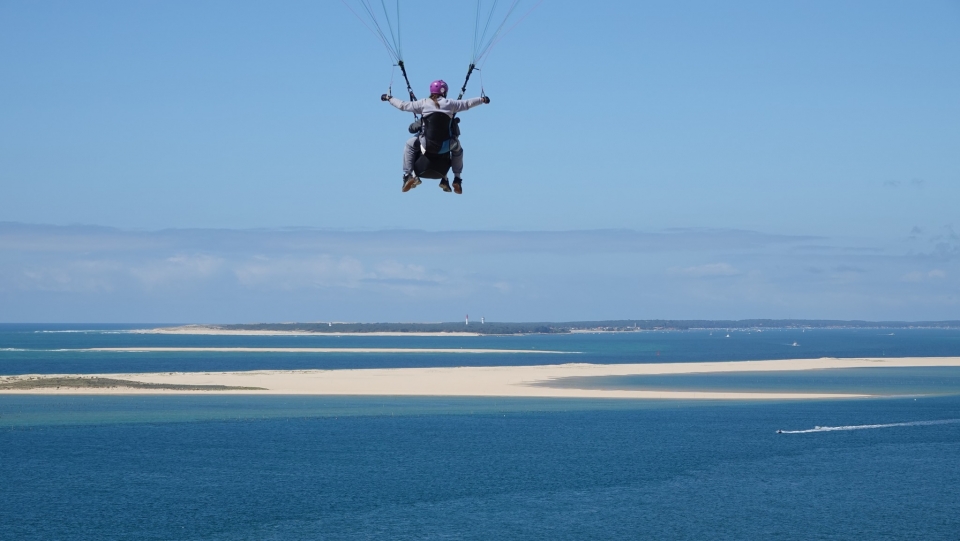1. General contraindications
2. Physical requirements
3. Minimum age

General contraindications
Can I go paragliding if I have vertigo?
To this frequently asked question, the answer is simple: yes! For the simple reason that the sensation of vertigo doesn't exist in paragliding.
Vertigo only occurs when you have an anchor point on the ground. You might experience it before takeoff when standing at the mountain's edge. Essentially, vertigo stems from the conflict between your brain and inner ear: while your inner ear perceives you're balanced, your eyes transmit an impression of emptiness. Once airborne, your inner ear understands you're suspended and the vertigo disappears! In the air, you'll only experience pleasant sensations. However, if you suffer from acrophobia (a much rarer fear of heights than vertigo), you might panic at the idea of being among the clouds.
Motion sickness
People prone to travel sickness may experience airsickness during paragliding - a nauseous feeling caused by the canopy's swaying or acrobatic manoeuvres. You can inform your instructor about your motion sickness: they'll adapt their piloting to ensure a smooth experience!

Physical requirements
Maximum weight
During a paragliding flight, you're attached to a canopy via lines called suspension cords and a harness. All equipment complies with safety standards, including the harness's maximum weight capacity. Depending on your instructor's equipment, this is typically between 90 and 120 kilograms.
Elderly participants and those with reduced mobility
Theoretically, there's no age limit for a paragliding taster flight. However, takeoff and landing require some physical ability:
- Depending on the launch site's terrain and wind direction, you may need to run a few metres until the wind fills the canopy and lifts you airborne.
- During landing, you must be able to land on both feet and bend your knees to help the instructor cushion the impact.
To accommodate participants with reduced mobility and others who might not meet these requirements, most paragliding centres have specialised equipment to make the experience accessible to all. Don't hesitate to contact them with any questions!

Minimum age
Paragliding taster flight
Children can experience their first flight from 4 or 5 years old. More than age, it's a matter of weight: minimum 20 kilograms. The equipment is adjustable and can accommodate most sizes and body types.
Good to know: Whether for a taster flight or pilot training, minors always require parental authorisation.
Introductory flight and pilot training
From 14 years old, you can learn to fly solo! This means completing an introductory flight with an instructor or your first solo odyssey. Teenagers learn technical basics on a training slope suited to their progression.
From 16 years old, you can undertake training to obtain your pilot's licence. Once certified, you can fly freely without instructor supervision, or even explore acrobatic paragliding.
As you've gathered, paragliding taster flights are practically accessible to everyone, depending more on weather conditions than anything else! Now that all your doubts have flown away, all that remains is to try this discipline by discovering the paragliding activities available on yumping.com.











